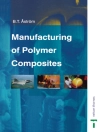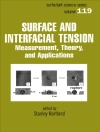The use of natural catalysts – enzymes – for the transformation of nonnatural man-made organic compounds is not at all new: they have been used for more than one hundred years, employed either as whole cells, cell organelles or isolated enzymes [1, 2]. Certainly, the object of most of the early research was totally different from that of the present day . Thus the elucidation of enzyme mechanisms was the main reason for biochemical pathways and research some decades ago. It was mainly during the 1980s that the enormous potential of applying natural catalysts to transform non-natural organic compounds was recognized. What started as a trend in the late 1970s could almost be called a fashion in synthetic organic chemistry in the 1990s. Although the early euphoria during the ‘gold rush’ in this field seems to have eased somewhat, there is still no limit to be seen for the future development of such methods. As a result of this extensive, recent research, there have been an estimated 13 000 papers published on the subject. To collate these data as a kind of ‘super-review’ would clearly be an impossible task and, furthermore, such a hypothetical book would be unpalatable for the non-expert [3-7].
Kurt Faber
Biotransformations in Organic Chemistry [PDF ebook]
A Textbook
Biotransformations in Organic Chemistry [PDF ebook]
A Textbook
Beli ebook ini dan dapatkan 1 lagi PERCUMA!
Bahasa Inggeris ● Format PDF ● ISBN 9783642185373 ● Penerbit Springer Berlin Heidelberg ● Diterbitkan 2012 ● Muat turun 3 kali ● Mata wang EUR ● ID 6321996 ● Salin perlindungan Adobe DRM
Memerlukan pembaca ebook yang mampu DRM












